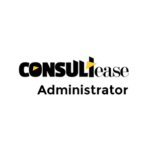CONCEPT PAPER ON FACELESS E-ASSESSMENT.
CONCEPT PAPER ON FACELESS E-ASSESSMENT.
I. Background:
1. In order to modernize the Customs administration, ease the burden of compliance for EXIM community, enhance transparency and efficiency, develop and maintain functional specialization, improve the quality of assessment practices, rely upon risk-driven approach and fast track border clearances, the Central Board of Indirect Taxes and Customs has carried out several reforms in the past few years. The focus of these reforms has been to cut down redundancies, place greater faith in the EXIM community and simplify the business processes and improve the robustness of our risk management system to balance facilitation and enforcement. These measures have earned us not only a quantum jump in the Trading Across Borders ranking but also greater recognition and appreciation by all the stakeholders – global as well as local about the trade facilitation initiatives spearheaded by CBIC.
2. Indian Customs is embarking on a new reform which would add further momentum to the ongoing reforms. CBIC has decided to introduce Faceless Assessment to (i) bring anonymity in assessment and cut down the physical interface between the Assessing Officer and the importer/broker to the extent technologically feasible (ii) ensure uniformity in assessments across the country (iii) promote sector-specific approach and functional specialization (iv) improve workload balance amongst various field formations for efficient utilization of the resources. The introduction of faceless assessment is part of the string of reforms titled ‘Turant’ Customs. CBIC had initiated a pilot project on Faceless Assessment at different Customs Stations. After the successful run of the pilot, CBIC has now decided to implement the Faceless Assessment across the country.
3. Apart from Faceless assessment, the other aspects of Turant Customs are Paperless Customs through intelligent e-Sanchit, Machine Release i.e. end-to-end automated clearance without any interface of officer at any stage, Advance Cargo Information through revised Sea Cargo Manifest and Transhipment Regulations, Improving visibility and traceability of Regulatory controls and logistics supply chain, further enhancing automation and technology in Customs clearance processes.
II. The journey towards Faceless Assessment:
1. One of the core functions of Customs administration is to give ‘clearance’ (referred to as ‘out of charge’ in Customs parlance) to the imported goods for home consumption, after levying appropriate duties/taxes and enforcing applicable restrictions and prohibitions in relation to those imported goods at the time of crossing the border. The clearance function may comprise of (a) assessment of bill of entry by the proper officer or acceptance of self-assessment done by the importer by Customs Automated System or (b) physical examination of goods or inspection of marks and numbers on the cartons or checking the integrity of container seals. The decision with regard to (a) and (b) is taken based on the risk evaluation carried out by Customs Automated System.
2. The Customs officers have three distinct roles in the Customs Automated System while granting clearance to the imported goods – (i) role of an assessing officer who does the document scrutiny – i.e scrutiny of bill of entry and relevant supporting documents submitted either by an importer or a Customs broker on behalf of the said importer (ii) role of an examining officer who does the physical examination of goods including checking the marks and numbers and integrity of seals on the container and (iii) role of an ‘out of charge officer’ who gives ‘Customs clearance’ or ‘out of charge’ once appropriate duty stands paid and the imported goods are either not prohibited or conditions attached to the import have been complied with. The three distinct roles mentioned above can be performed either by a single officer or more than one officer as long as the officers are empowered as proper officers under Section 17, 18, 46 and 47 of Customs Act 1962.
3. The Customs Automated System broadly categorizes the bills of entry into two separate categories – (a) facilitated bills of entry and (b) non-facilitated bills of entry. The facilitated bills of entry are neither subjected to assessment nor examination and they are routed directly to ‘out of charge officer’ for granting clearance. The assessment function and the decision with regard to whether a consignment has to be subjected to examination is taken over by the Risk Management application. The ‘out of charge officer’ verifies whether requisite supporting documents have been submitted along with the bill of entry before giving the clearance. In the event of any deficiency with regard to submission of supporting documents or if a risk is perceived with regard to any bill of entry, the ‘out of charge officer’ with the concurrence of Additional Commissioner can override the facilitation given by Customs automated system and refer the bill of entry either for assessment or examination. In the case of non-facilitated bills of entry, the Customs Automated System would indicate whether a bill of entry has to be subjected to either assessment or examination or both.
4. One of the important aspects with regard to assessment and examination is the place where these processes can be done. While the examination is done by examination officers where the goods are physically present i.e either in the docks or CFS or ICD, the assessment is done by appraiser/superintendent and Assistant or Deputy Commissioner in the Customs House, which is generally away from the examination area. Both the assessing officers and examining officers have independent access to the bill of entry in the Customs EDI system for carrying out respective functions. The assessment function in Customs automated system is divided into different Groups based on Customs Tariff Classification.
Download the copy:
If you already have a premium membership, Sign In.
 ConsultEase Administrator
ConsultEase Administrator
Consultant
Faridabad, India
As a Consultease Administrator, I'm responsible for the smooth administration of our portal. Reach out to me in case you need help.













